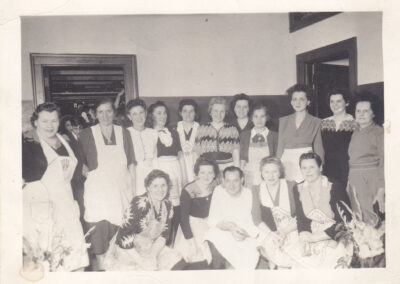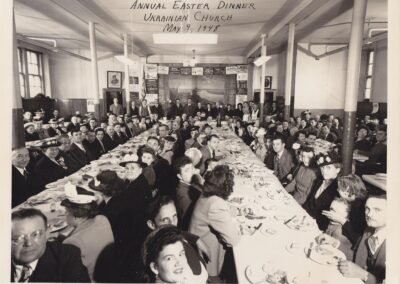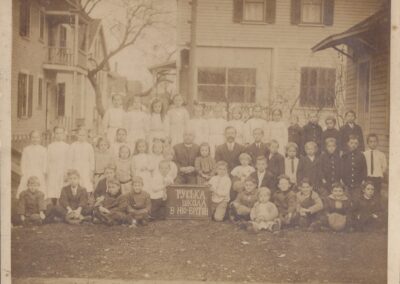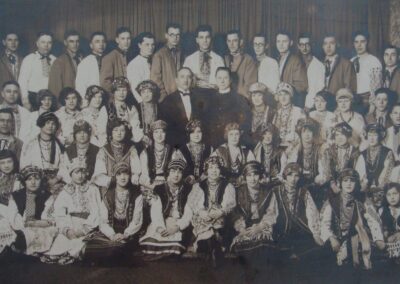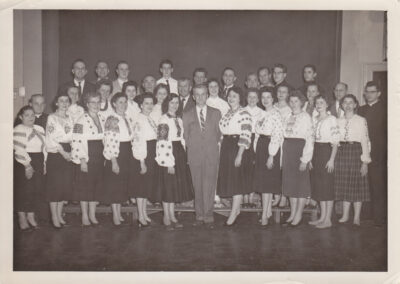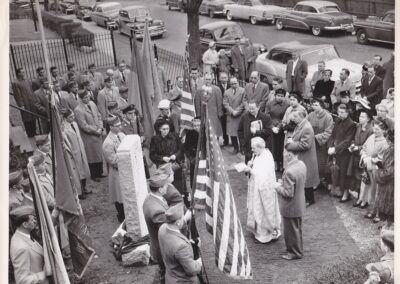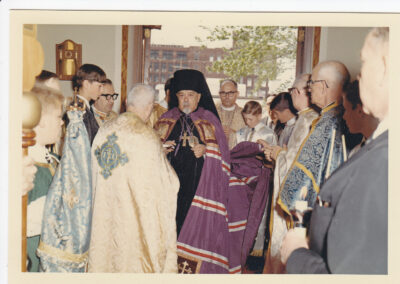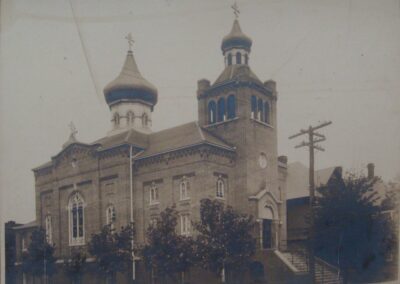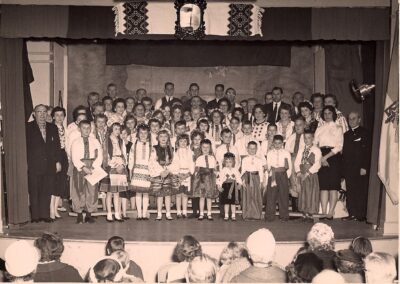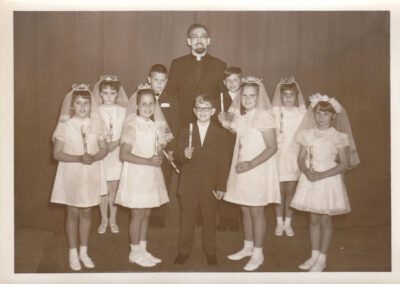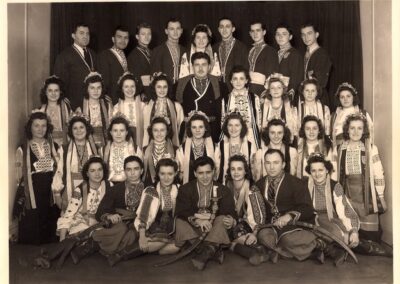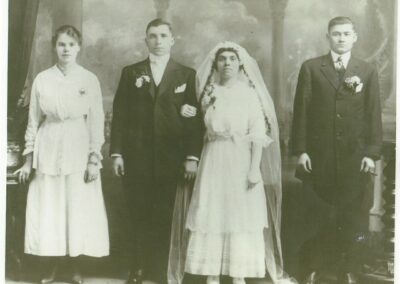Church History
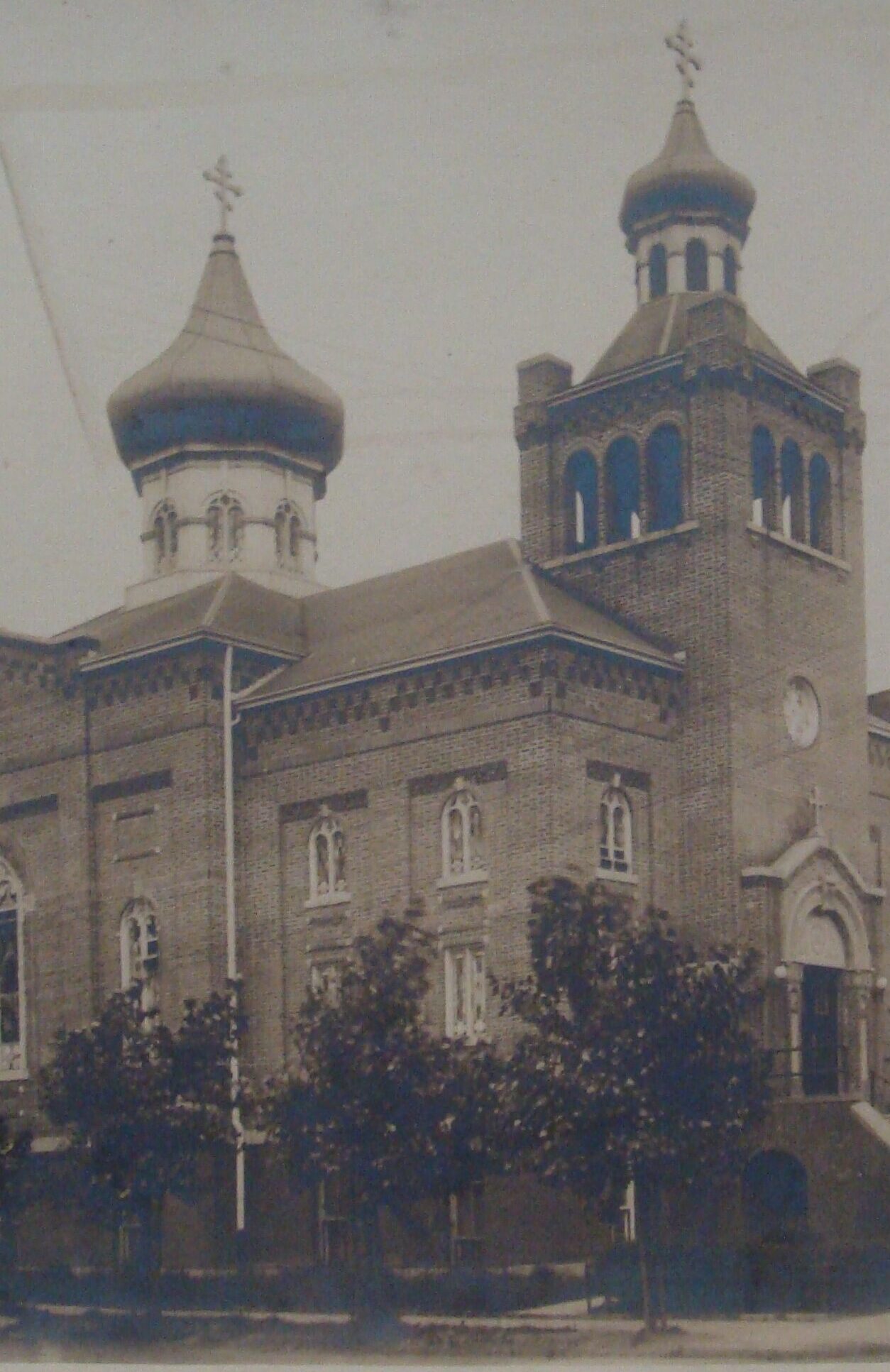
The History of St. Mary’s Ukrainian Orthodox Church
In the second half of the 19th century, New Britain, CT, served as the state’s manufacturing center, producing tools and hardware in factories powered by immigrant labor. In a diverse setting of Southern and Eastern European ethnic groups in the 1890s, a small but strong enclave of newly arrived immigrants from the Halychyna region of the Austro-Hungarian Empire forged what was to become the Ukrainian community in New Britain.
While the early community grew and thrived, disagreements within the local Byzantine Catholic parish led the Halychyna to form their own parish on Winter Street by 1910, consecrated as St. Mary’s. Worshipping in a small 1911 structure that would become the present church’s basement, the growing congregation completed the upper portion of the church by 1917.
By the 1920s, St. Mary’s parish now served the second generation of those first immigrants, while welcoming still more during the inter-war years. Now identifying themselves as Ukrainian, the parishioners developed mutual aid societies, a church school, a Ukrainian-language school, a print shop, a parish cemetery and a prize-winning choir, among many other parish organizations. St. Mary’s joined the newly formed Ukrainian Orthodox Diocese by the end of the decade.
Dozens of St. Mary’s young men served in WWII with a few making the ultimate sacrifice. With New Britain’s factories converted to war production work, the city and St. Mary’s saw a steep increase in new Ukrainian immigration. Under the leadership of Very Rev. Mitered Peter Kowlachyk, the parish expanded dramatically in the post-war years. It burned the mortgage in 1945, added a parish house next door, helped to build the city’s Ukrainian-American Club in the 1960s and developed additional dynamic, hard-working parish organizations such as the Sisterhood of St. Olga and the Ukrainian-American Veterans.
A terrible fire in 1973 provided the parish with the opportunity to renovate the altar and nave in a more Orthodox tradition. The parish installed an iconostas in 1977 under the guidance of Fr. Michael Horoshko, planned under the pastorship of Fr. Michael Zaparaniuk. Under the 20-year pastorship of Very Rev. Jakiw Norton, St. Mary’s expanded its holdings to include two adjacent properties and a growing involvement in diocese-wide programs such as the U.O.L. Successful projects such as making varenyky and bread-baking provide parish financial support as well as keep Ukrainian traditions alive.
With the demise of the Soviet Union in 1991, St. Mary’s welcomed its ‘fourth wave’ of Ukrainian immigration as it developed into a commuter parish, reflecting the growth of suburbs around urban centers.
Today, under the recent leadership of Ihumen Gregory (Woolfenden) and current guidance of Very Rev. Andrii Pokotylo, our parish of Saint Mary, Nativity of the Mother of God, continues to grow. Grateful for our Lord’s blessings for more than 112 years, St. Mary’s parish-family strives to serve Christ and His Church in this 21st century.
O, Most Holy Theotokos, save us!
Excerpts from the St. Mary’s Centennial History Presentation
Melissa A. Josefiak
“It is my great pleasure to speak with you today in celebration of Saint Mary’s 100th anniversary. The images you see scrolling past on my right reflect the hard work, service and community bonds that have served St. Mary’s parish for more than one hundred years. Today’s presentation will not be a slide-by-slide explanation, but rather a cumulative look back at the faces and events that have shaped St. Mary’s Ukrainian Orthodox Church and all of our lives as families and as individuals, all serving Christ.
The photo collections include those of the parish’s Cultural Room and those of parishioners who rummaged through their family photo albums and shoe boxes for their own images of the past so that the committee could scan or make a digital image of these treasures.
The images reflect the true diversity and vitality of St. Mary’s over 100 years. You will see stiff, posed wedding portraits of newly arrived immigrants, images of the homesteads in streets nearby the church, images of flappers from the 1920s and skinny ties from the 1950s, countless dinners hosted by St. Olga’s sisterhood and banquets honoring our veterans. There are images of the first Ukrainian Club on Erwin Place and later the one on Oak Street. It is interesting to compare a late 1920s black and white photo of a smiling altar server swinging his censor at the church doors with the digital color photos of today’s children, smiling just as happily as they pose for their First Holy Penance.
Through all of these events, the center of parish life continued to be Christ and His Church. Seemingly every third photograph we received centered around a Sacrament received at St. Mary’s – weddings, baptisms, christenings, ordinations, communions and even some funerals. Select Holy Days such as Pascha processions and special Christmas events capture the mystical beauty of the services.
What all of these photographs demonstrate is that St. Mary’s has served as the center of the Ukrainian-American Orthodox community for longer than a century. The motto of the State of Connecticut is “He who transplants, still sustains,” which can be applied to those four waves of Ukrainian immigrants who settled, grew and maintained this parish throughout its first hundred years.
One hundred and 20 years ago the first individuals emigrated from Western Ukraine to New Britain. At the end of the nineteenth century, New Britain bustled with industry as the world’s Hardware Capital. Booming hardware, tool and metal implement factories required hundreds of workers to staff their second and third shifts around the clock. These job opportunities served as a boon to unskilled, non-English speaking immigrants who were eager to leave war-weary Austria Hungary as the Empire provided few options for education or advancement.
With an established Polish community already in place, New Britain, Connecticut served as a prime location for chain migration, a term referring to settlement patterns in which people gravitate to areas where their culture, language and identity are similar. Those first Western Ukrainians (known as the First Wave of Ukrainian Immigration) first prayed with the Poles at Sacred Heart Church in the late 19th century, then with the Hungarians at Holy Trinity Church on Beaver Street and eventually founded their own Ukrainian (or in the language of the time, Ruthenian) church at our present location at 54 Winter Street. Laying the foundation in 1910, they prayed in the finished basement for 7 years until funds were raised to complete the upper portion of the church in 1917.
By this time, immigration had increased while a new generation of parishioners was growing up. St. Mary’s represented the physical center of the Ukrainian community at that time, at the cross roads of Winter and Clark Streets. By 1920, Ukrainian stores, shops and taverns established themselves up and down North Street and its connecting roads. The Ukrainian print shop on Union Street, mutual benefit societies such as Sts. Peter & Paul and St. Volodymyr provided insurance coverage and support networks, a Ukrainian-language school was established — all of these groups provided the social and service background to the daily prayer life centered around the church.
The successive “Second Wave” of immigration, between the two world wars, was much smaller but by this time the children of those first-wavers were growing to adulthood and had established a beach-head of sorts in the neighborhood, living in the tenements, three-family and single-family homes. Again, St. Mary’s served as the geographic center of the Ukrainian community. It was during the 1920s and 30s that St. Mary’s produced concerts and participated in regional conventions with the YUAP. The parish cemetery was established on Osgood Avenue. Picnics at Schutzen Park became a summer tradition in addition to social dances at the Ukrainian Club on Erwin Place. It was at this time that St. Mary’s joined the growing national Orthodox Church and assumed its present name.
World War Two saw the peak in New Britain’s economy as many hardware factories transitioned to war production work. Dozens of parishioners joined the war effort: men serving on the front lines; women joining in factory work and service organizations; and families praying unceasingly for them. The veteran’s organization, the Private Andrew Prestash Post, and the church’s monument to honor the fallen were established shortly afterwards.
Also after the war came the Third Wave of Ukrainian immigration, those displaced persons and refugees seeking safe harbor. By this time, the parish still was growing, but many people had moved out of the North Street area to other parts of New Britain or its closest suburbs, thanks in part to better transportation, better education and job opportunities elsewhere. St. Mary’s continued to serve as the center of prayer life, even though the Ukrainian-American community was moving farther out. During the post-war decades, the Church School was founded, a scholarship fund was established, parishioners now attended national conventions for church organizations and they were instrumental in building the new, larger Ukrainian Club on Oak Street.
Towards the close of the twentieth century, many parishioners were located even farther from New Britain, but St. Mary’s continued to adjust to changing times and changing needs. Following a major fire in 1972, the church rebuilt and reconsecrated its altar, later installing its iconostas in 1977. St. Olga’s Sisterhood continued to lead the charge in fundraising for the parish in addition to the popular parish-wide festivals and bread-baking. Hosting conventions as well as attending them, parishioners strived to raise the parish’s national profile. Revivals in Ukrainian dance began in the 1980s and continue today.
Following the fall of communism in 1991, the “Fourth Wave” of Ukrainian immigration brought new blood to the parish and communication and aid to Europe increased. Participation in service organizations, outreach and stewardship became the focus of the last 20 years. The Bundles for Ukraine program has sent thousands of packages of food, clothing and needed supplies to poorer parishes and orphanages overseas. Through the Youth Ministry office, the children of St. Mary’s produce cards and crafts for parish shut-ins several times a year and donate their “Pennies from Heaven” collected during Great Lent to support the Bundles program. Young people attend mission trips overseas and in just this Centennial year, parishioners have “adopted” teenagers at Fontanka orphanage.
It is impossible to condense one hundred years of history into a ten minute talk. But through these highlights, accompanied by this sampling of scrolling photographs, one can grasp the community bonds that have centered St. Mary’s for this first century of its growth. In that word “community” one can hear the word “commune” –meaning both discussing and engaging with one another as well as receiving the gifts of Christ through Holy Communion. Several families within St. Mary’s have received these sacraments here for five generations and eagerly welcome new members to share in this unique community. As we enjoy the faces and events scrolling by, several passages from the holy services come to mind, such as “they will be remembered from generation to generation,” and “may you live to see your children’s children” and “we are members of one another.” Serving and celebrating Christ for 100 years, thank you St. Mary’s.”

